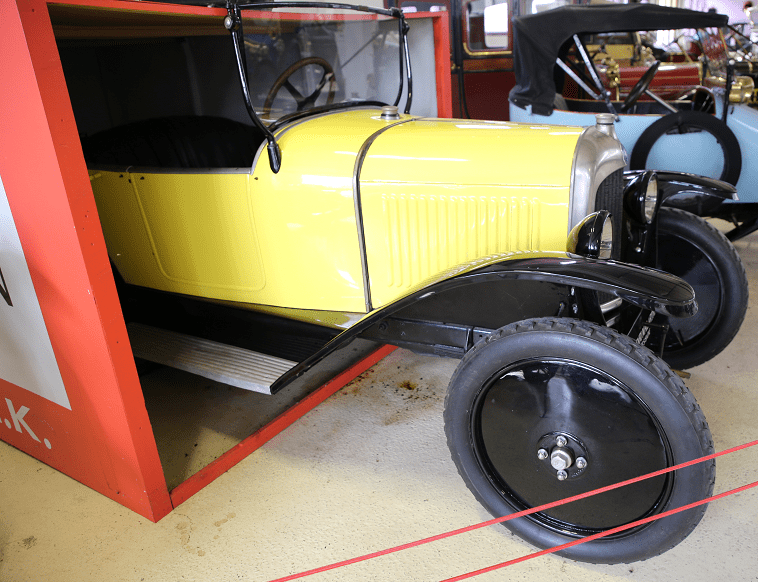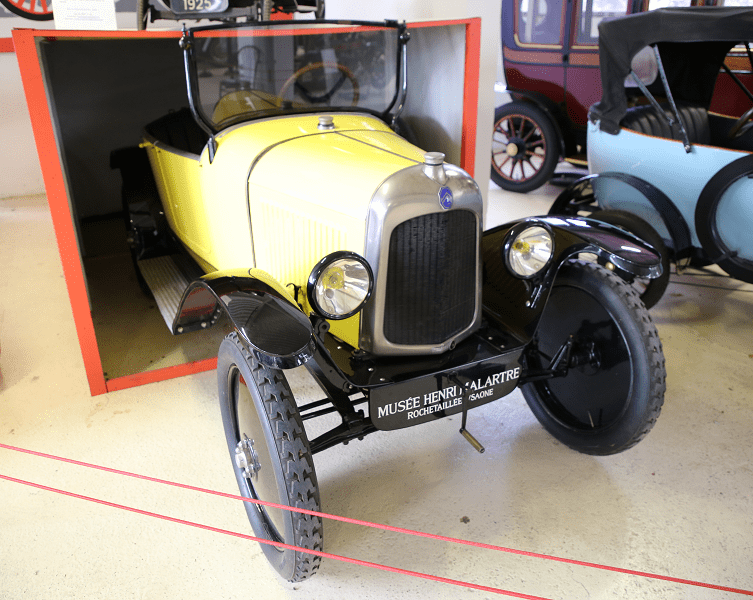The Citroën Type C was a light car made by the French Citroën car company between 1922 and 1926 with almost 83,000 units being made. Known as Citroën 5HP or 5CV in France and 7.5HP in Britain, it was the second model of automobile designed and marketed by André Citroën, between 1922 and 1926. It followed the 10HP “Type A ” (June 1919) which was replaced by the 10HP “B2” (June 1921); they were the first European mass-produced cars.
The genesis of the Type C took place in the immediate post-war period, when the whole of Europe was in a disastrous state, especially economically, with relentless inflation reducing the value of savings and investments of all kinds.
Only those industrialists with a particularly modern approach to production could hope to weather the financial crisis with a minimum of damage.
The first of these in Europe was André Citroën, a fervent admirer of Henry Ford’s methods of mass production, especially after his visit to Detroit in 1912.
He had been able to put these methods into practice during the war in his ammunition factory where he had achieved remarkable levels of production (50,000 shells per day).
By the end of the war, Citroën had a fully equipped factory, which he decided to use for mass production of vehicles as Henry Ford had done with his famous Model T since 1908.
While the French government encouraged, by means of tax benefits, car manufacturers to invest in cyclecars (maximum weight: 350 kg), André Citroën preferred to enter the small car sector, then monopolized by Peugeot and Renault.
Despite its resemblance to the Type A designed by Jules Salomon, the 5HP was above all the work of the engineer Edmond Moyet who, like Jules Salomon, arrived at the Quai de Javel from “le Zèbre”, after a significant experience in the field of popular cars; a few months earlier, he had designed a very similar vehicle for Amilcar: the “CC”
The result of this project was presented for the first time at the Motor Show in November 1921 as the Type C, although orders and first deliveries of the car were not received until spring 1922. It was a small car offered only with a two-seater Torpedo body, with a length of only 3.2 metres and a wheelbase of 2.25 metres (short chassis).
The lines were elegant, despite the small size of the body. The front had one of the most handsome radiator masks and the rear bodywork had a tapered boat deck shape.
The 5HP was a popular car, intended to enter the market segment below the 10 HP Type A. It was “delivered complete, without extra charge, with electric starting and lighting, five tyred wheels and a rear axle with differential”.
The selling price of the 5HP Torpedo in 1922 (8500 FR) was about 60% of that of the 10 HP B2 (13900 FR) and was also much lower than its main competitor, the Peugeot Quadrilette (10000 FR) which was only a cycle car.
Although an engineer by training, André Citroën was above all a business genius in search of new ideas to assimilate and exploit. Thus he founded a consumer credit company, allowing customers to buy cars on credit, a new method for the time.
Citroën also invented the spare parts manual, the repair instructions manual, detailed repair rates and the standard exchange system for mechanical parts refurbished at the factory.












